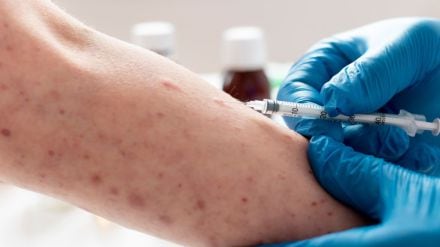California health officials have confirmed two unusual cases of mpox, a rare viral illness, in people with no recent travel history. This is the first time such local cases of a more severe mpox strains have been reported in the United States.
The first case was confirmed earlier this week by the Long Beach Department of Health and Human Services following lab tests at a state facility. The second case emerged in Los Angeles County, where officials reported a patient with similar symptoms.
“We are taking this very seriously and are working closely with our community and healthcare partners to prevent further cases,” Long Beach Mayor Rex Richardson said in a statement. “This highlights the importance of ongoing surveillance, early response, and vaccination,” the statement further read. Officials have also stressed that the risk of wider spread to the general public remains low.
Mpox in California: What we know so far
Mpox has two known variants, clade I and clade II. Both patients in California tested positive for the clade I variant, which is considered more severe. While clade I cases have been identified in the US before, those previous cases involved international travellers. These recent patients are the first confirmed cases without any recent foreign travel.
All six earlier clade I cases in the US were linked to people who had been abroad and were likely infected overseas. The two current patients were hospitalised after diagnosis but are now recovering at home. Officials have not shared further personal details about them.
Jennifer Ann Gonzalez, acting public affairs officer at the Long Beach Health Department, said, “At this point in our investigation, we have not found any connection between the two cases.” While Long Beach is part of Los Angeles County, it operates its own health department. Investigators have yet to identify any close contacts who recently traveled abroad or confirm additional mpox cases. Some close contacts have been vaccinated, according to Nora Balanji, the department’s communicable disease coordinator. She added, “We don’t have any evidence of ongoing community transmission, but it’s something we are monitoring closely.”
What is Mpox?
Mpox, previously called monkeypox, is a viral illness caused by the monkeypox virus, which belongs to the Orthopoxvirus genus, the same family as the smallpox virus. Mpox was mostly found in Central and West Africa, where it spreads among animals and occasionally infects humans.
The first case of mpox in the United States was reported in 2003, linked to imported animals from Africa. A larger outbreak in North America began in 2022, when cases appeared across several states, mostly involving people who had traveled internationally.
There are two primary clades of the virus: clade I (more severe) and clade II (generally milder). During the 2022–2023 global outbreak, clade IIb was responsible for the majority of infections worldwide.
Symptoms of Mpox
According to the Centers for Disease Control and Prevention (CDC), symptoms of mpox are similar to smallpox but usually milder. Common signs include fever, chills, headaches, muscle aches, fatigue, and swollen lymph nodes. A hallmark symptom is a distinctive rash that often begins as flat spots, then develops into raised bumps, blisters, and eventually scabs. The rash usually starts on the face and can spread to other parts of the body, including the palms and soles. Most patients recover within 2–4 weeks, though severe illness can occur in children, pregnant women, and people with weakened immune systems
How Mpox spreads
According to the Mayo Clinic, mpox spreads primarily through close contact with an infected person or contaminated materials. This includes direct contact with the rash, scabs, or body fluids; respiratory droplets during prolonged face-to-face contact; and contact with contaminated objects such as bedding or clothing. Although the virus is endemic in parts of Africa, recent cases in the United States demonstrate that local transmission is possible, though still uncommon. Health officials emphasize that casual contact in public settings carries a low risk of infection.
Prevention and Vaccination for mpox
To reduce the risk of mpox infection, health authorities recommend several precautionary measures. Avoid close contact with individuals displaying symptoms of mpox, including skin-to-skin contact with rashes or sores. Practice good hygiene by regularly washing hands with soap and water or using hand sanitizer, especially before eating or touching your face. Wear personal protective equipment (PPE) when caring for infected individuals, and ensure that infected patients are isolated until all lesions have healed and new skin has formed.
Vaccination is also available for people at higher risk, such as healthcare workers, laboratory staff, and close contacts of infected patients. The JYNNEOS vaccine, which is also used for smallpox, is administered in two doses and has shown effectiveness in preventing mpox infection. According to the Cleveland Clinic, JYNNEOS is preferred in the US due to its lower risk of serious side effects compared to earlier vaccines like ACAM2000.
Global and US response
The World Health Organization (WHO) declared the 2022–2023 mpox outbreak a Public Health Emergency of International Concern, but downgraded the emergency status for Africa in 2024 due to declining cases and improved containment.
In the US, the CDC continues to monitor mpox and provide guidance on prevention and treatment.
